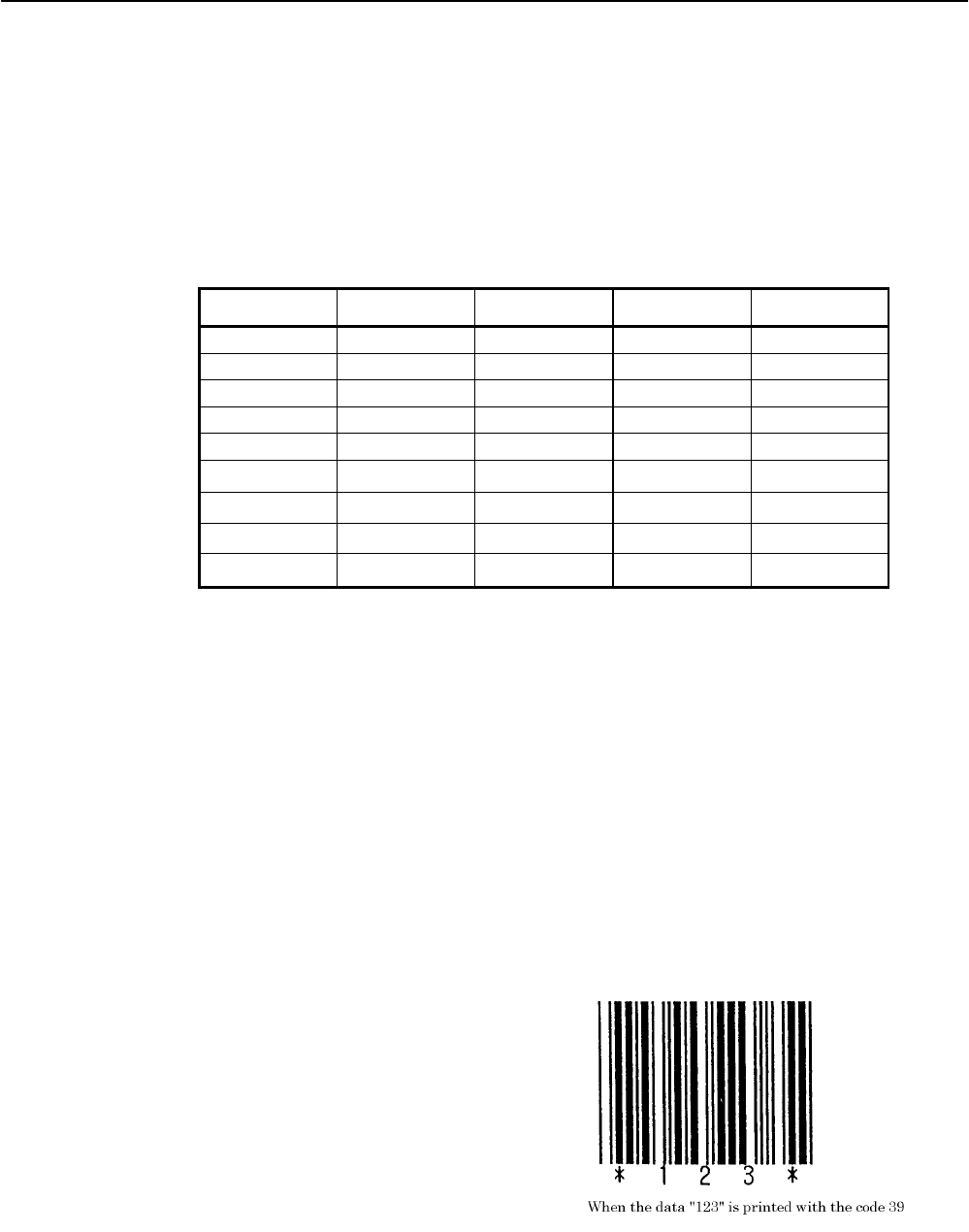
iDP3221 User’s Manual
107
CITIZEN
When sending print data, note these:
(1) Each string of bar code data must begin with a codeset select character (CODE A, CODE
B, or CODE C), which selects the first codeset to use.
(2) Every special character is specified by a combination of two characters: a brace "{"
followed by one character. A brace "{" itself is specified by two consecutive braces
"{{."
Special characters
Hex. ASCII Codeset A Codeset B Codeset C
7B 53 { S SHIFT SHIFT
–
7B 41 { A
–
CODE A CODE A
7B 42 { B CODE B
–
CODE B
7B 43 { C CODE C CODE C
–
7B 31 { 1 FNC1 FNC1 FNC1
7B 32 { 2 FNC2 FNC2
–
7B 33 { 3 FNC3 FNC3
–
7B 34 { 4 FNC4 FNC4
–
7B 7B { { { { {
<Example> To print "No." in codeset B, followed by "123456" in codeset C, send the
following data string:
GS k <73><10><7BH 42H> "No." <7BH 43H><12><34><56>
• If the printer finds a string of bar code data that does not begin with a codeset select
character, it immediately aborts the command processing and handles the subsequent data
as normal data.
• If the printer received a character that is not available in the currently selected codeset, it
immediately aborts the command processing and handles the subsequent data as normal
data.
• An HRI character corresponding to either a Shift character or a code select character is not
printed. An HRI character for either a function character or a control character is treated
as a space character.
[Sample Program] [Print Results]
LPRINT CHR$ (&H1D) ; "H" ; CHR$ (2) ;
LPRINT CHR$ (&H1D) ; "k" ;
LPRINT CHR$ (4) ;
LPRINT "123" ; CHR$ (0) ;


















